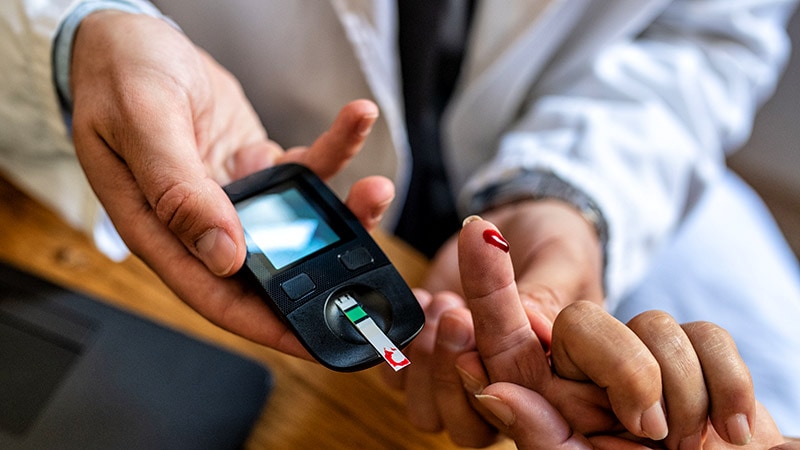Takeaway
- Patients with type 2 diabetes (T2D) who develop obstructive sleep apnoea (OSA) are at an increased risk of incident cardiovascular disease (CVD), microvascular complications, and mortality compared with those without a diagnosis of OSA.
- Physicians need to identify that patients with T2D who develop OSA are a high-risk population and that strategies to detect OSA and prevent vascular complications should be implemented.
Study designs
- This retrospective study included 3667 patients with T2D and a subsequent diagnosis of OSA and 10,450 matched control participants with T2D but no diagnosis of OSA using data from The Health Improvement Network (THIN) database, UK.
- Funding: None disclosed.
- After adjustments, patients with T2D and OSA vs control participants were at an increased risk of:
- composite CVD (ischaemic heart disease [IHD], stroke/transient ischaemic attack [TIA], heart failure [HF])(HR, 1.54; 95% CI, 1.32-1.79);
- IHD (HR, 1.55; 95% CI, 1.26, 1.90);
- stroke/TIA (HR, 1.57; 95% CI, 1.27-1.94);
- HF (HR, 1.67; 95% CI, 1.35-2.06);
- atrial fibrillation (HR, 1.53; 95% CI, 1.28-1.83); and
- all-cause mortality (HR, 1.24; 95% CI, 1.10-1.40).
- Similarly, patients with T2D and OSA vs control participants were at a higher risk of:
- peripheral neuropathy (HR, 1.32; 95% CI, 1.14-1.51);
- diabetes-related foot disease (HR, 1.42; 95% CI, 1.16-1.74);
- chronic kidney disease (stage 3-5; HR, 1.18; 95% CI, 1.02-1.36); and
- albuminuria (HR, 1.11; 95% CI, 1.01-1.22).
- No significant association was observed between OSA and the risk of peripheral vascular disease (HR, 1.10; 95% CI, 0.91-1.32) or referable retinopathy (HR, 0.99; 95% CI, 0.82- 1.21).
- Retrospective design.
References
References



